Amongst many failings that are better not listed, my sense of smell is severely lacking. This is far from a tragic disability, but an inconvenience for a gardener in a garden chock full of delicious scents (I’m told).
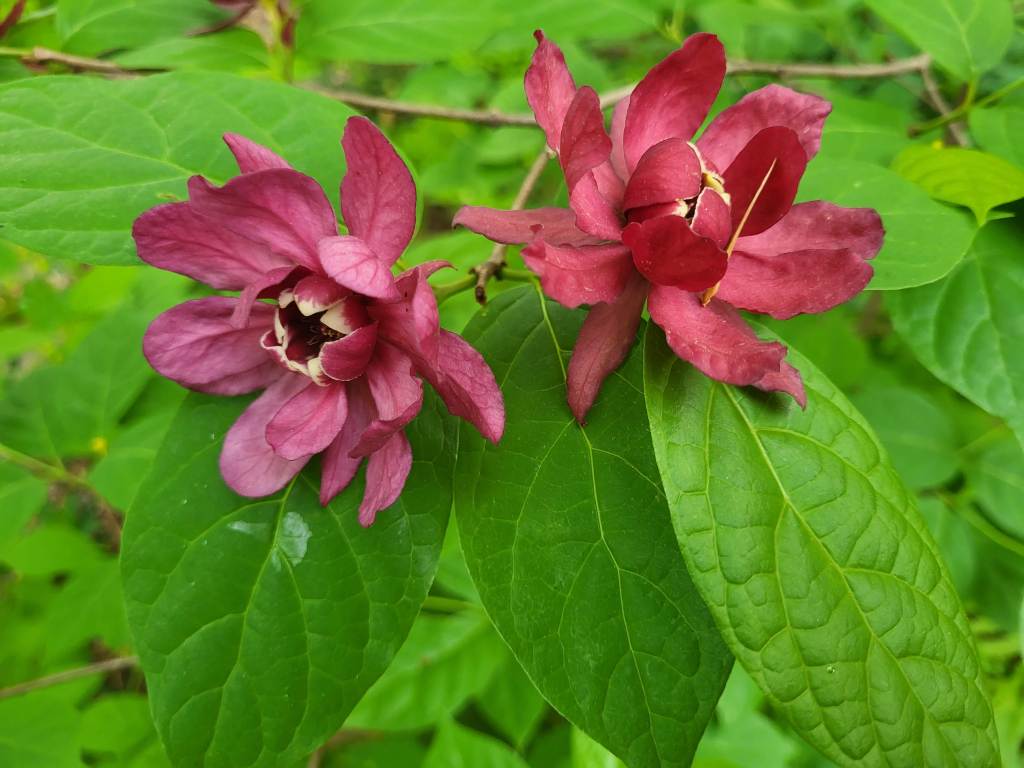
This moment’s treasures are the various sweetshrubs (Calycanthus), a collection that has expanded in recent years to include natives and several floriferous hybrids. A few are barely scented (I’m told), but the exquisite sweetness of others sneaks through my balky nose.

As several sweetshrubs have demonstrated that flowering is not significantly diminished in the shade, I’ve added several along the forested border of the garden. Several are close, but yet to flower. ‘Aphrodite’ and the white flowered ‘Venus’ (below) are budded, and I’m anxious to be reminded which is which.
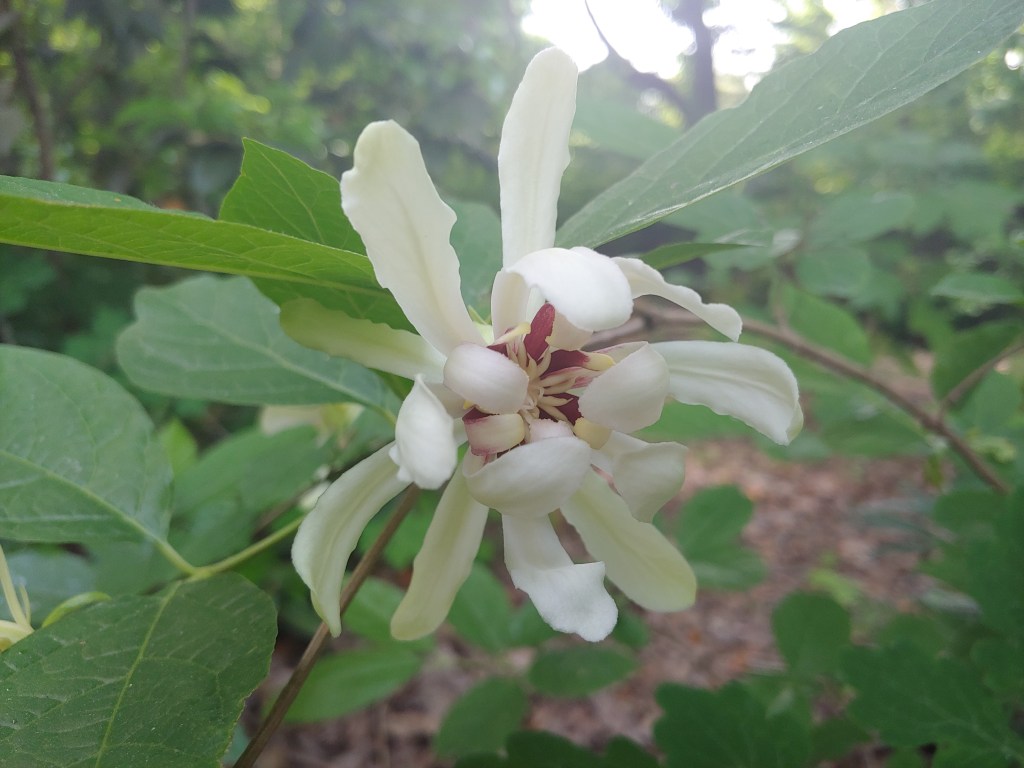
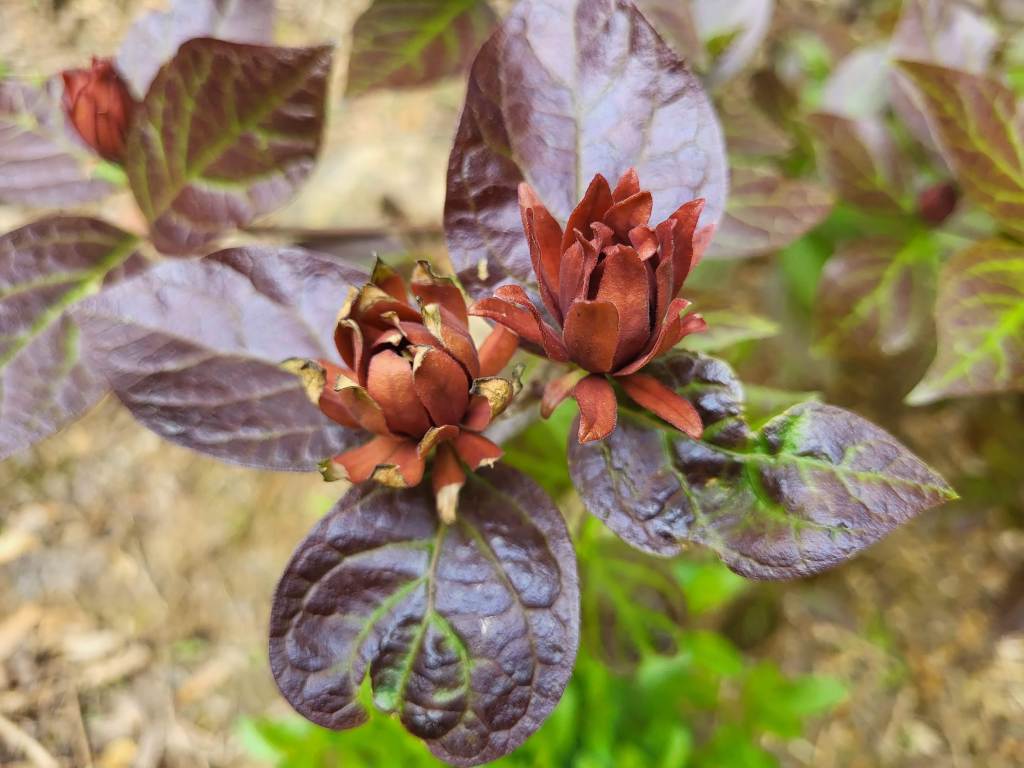
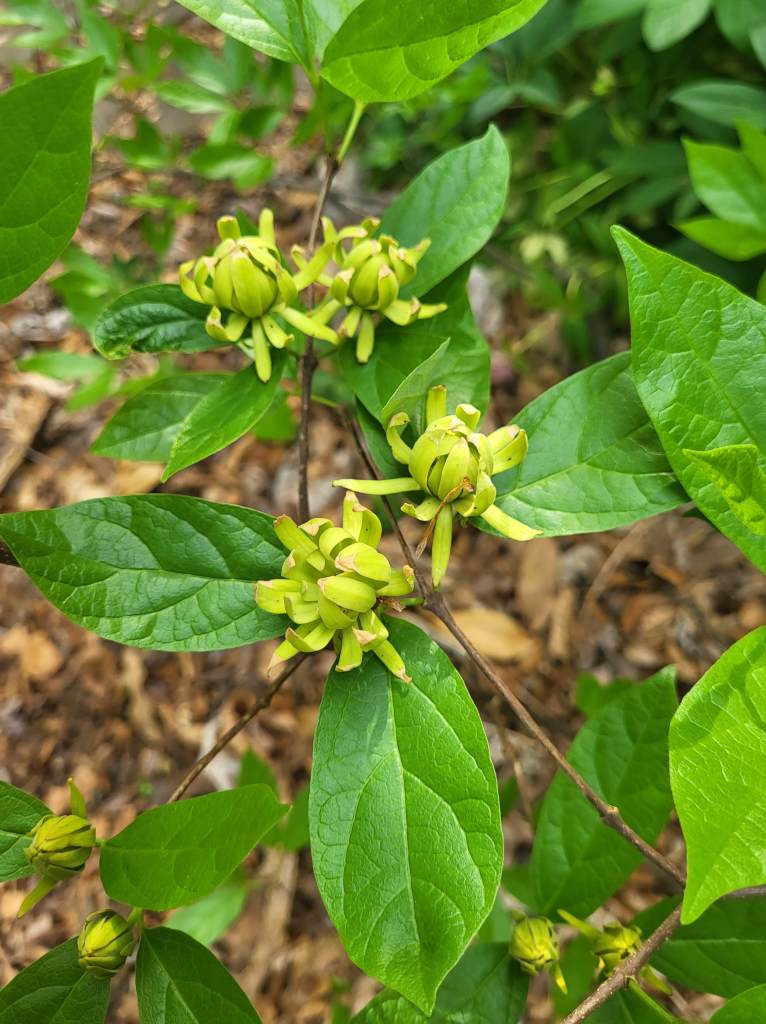
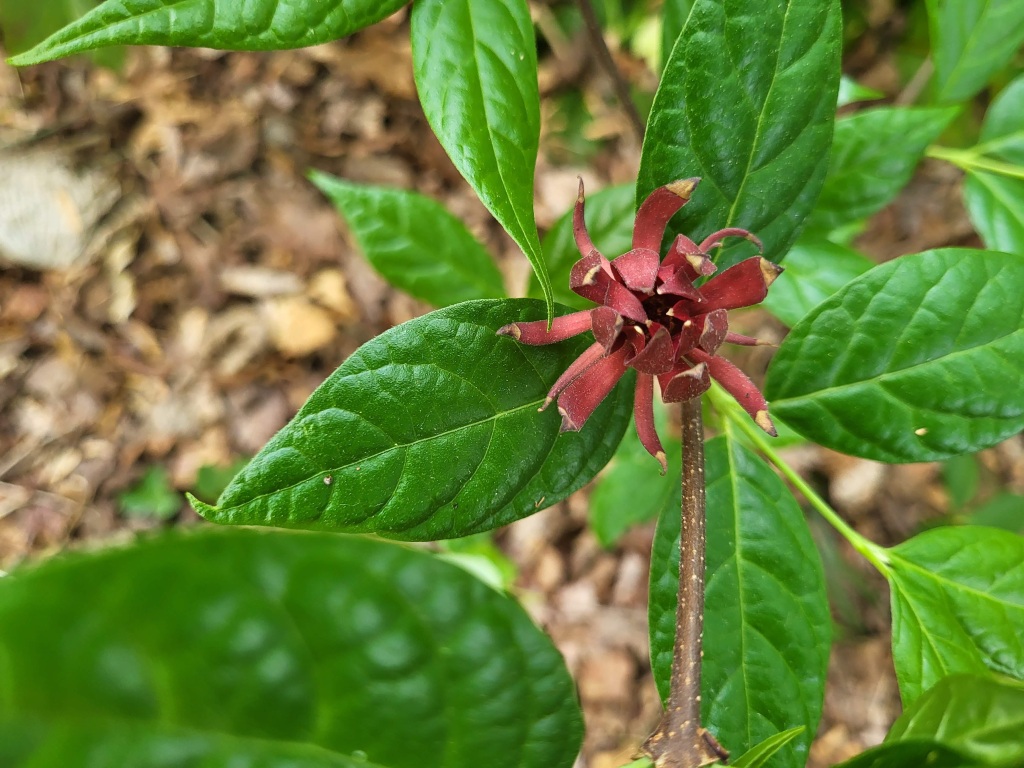
Calycanthus occidentalis is native as near to here as Santa Clara County. Some were installed into at least one of our landscapes. The bloom smells like used wine barrels, but most who experience it seem to like it. Cultivars of Calycanthus floridus are only rarely available, but are so typically marketed as ‘native’ that some believe it.
Yes, native to this planet. I don’t guess declaring a plant from the SE native to the West is as bad as one that’s native to the NE, but the climates are obviously very dissimilar. Sweetshrubs are quite forgiving, so I believe the west coast native will tolerate our humidity and warm nights.
I would guess that it would because it is a riparian species here. Ours live on the banks of one of the small streams that flow through the landscapes. Although the climate is certainly not humid, such riparian situations are a bit more humid.